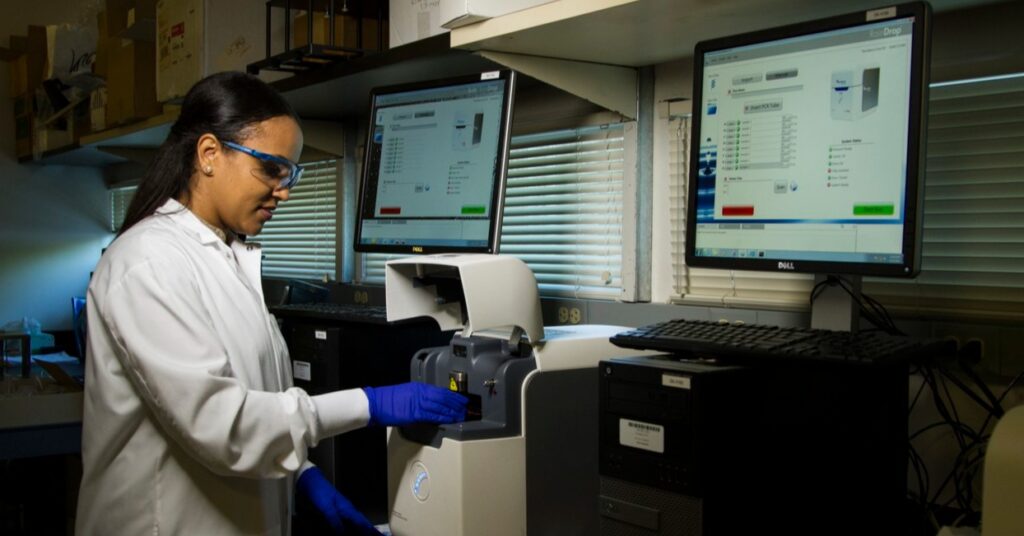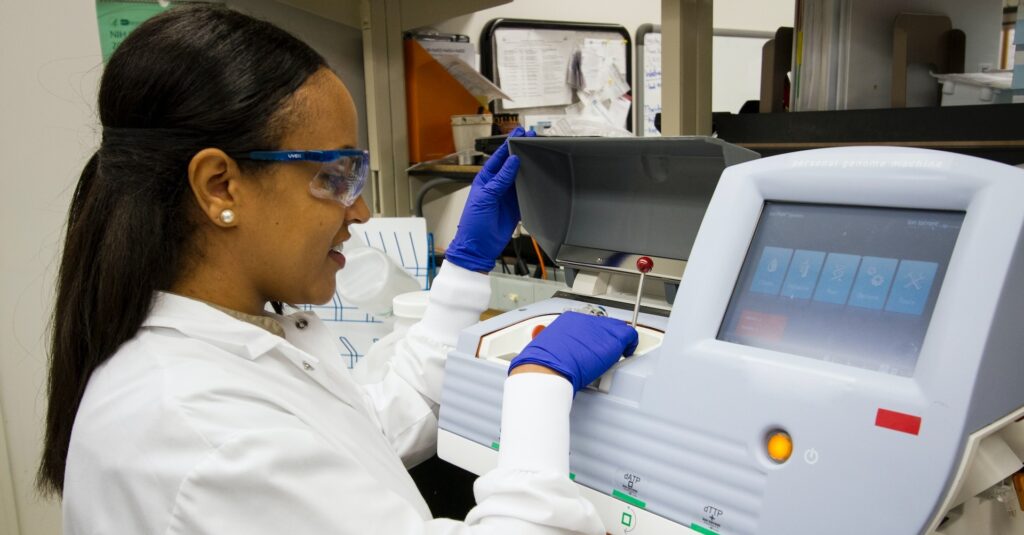
What Is the Epidemiological Triangle?
The epidemiological triad or triangle is an organized methodology used [...]

For most of the past two centuries, women have achieved significantly longer life expectancies than men. According to the Centers for Disease Control and Prevention (CDC), male life expectancy currently stands at 73.2 years, while female life expectancy is 79.1 years. This disparity explains why the number of women in the U.S. consistently exceeds the number of men.
Statistics from the Administration for Community Living reveal that elderly Americans of both genders are among the fastest-growing demographics in the country. Because healthcare needs increase as we age, the demand for women’s healthcare professionals should spike sharply as the nation’s age demographics continue to shift. While healthcare practitioners who care for the elderly enjoy excellent job prospects in terms of potential career opportunities and lucrative salaries, those numbers are particularly favorable for professionals specializing in women’s health.
Maintaining optimal health is critical as we age, and healthcare needs for men and women can differ significantly. Women are at higher risk of developing certain conditions and diseases, including heart disease, the leading cause of death for women in the United States. Though heart disease is also the leading cause of death for men, women are more likely to die following a heart attack than men. Sometimes the presenting symptoms can be similar, but the necessary care and treatment plans are markedly different. That’s one reason it’s so important to have qualified women’s health nurse practitioners (WHNPs) who focus on female wellness.
Women’s health nurse practitioners follow a woman’s healthcare journey at every stage of her lifespan. In addition, they ensure necessary preventative healthcare measures to provide early detection of medical issues. There’s plenty of need for these professionals in the field, but how much do women’s health practitioners make? This article answers that question and covers the following topics:
Many factors can impact a WHNP’s annual salary, including education level, geographic location, experience level, relevant credentials/certifications, and employing organization. According to Payscale, the average salary for a women’s health nurse practitioner in the United States is $96,452.
As with many occupations, the more experience you bring to the table, the more earning potential you command. Entry-level WHNPs with fewer than one year of experience can expect to earn average compensation, including bonuses, overtime pay, and other incentives of $88,403 per year. Early career practitioners with fewer than four years of experience earn an average of $93,200 per year. On average, those with five to nine years of experience earn $98,276 per year. Finally, experienced practitioners with at least ten years of experience earn over $100,000 per year on average.
According to Comparably, women’s health nurse practitioners make the most in Los Angeles at $100,522 per year on average.
Women’s health nurse practitioners provide patient-centered primary care for women. They treat clients from puberty through adulthood. They specialize in:
People choose to enter this profession for many reasons. Dr. Robin Squelleti, a women’s health nurse practitioner with over 25 years of experience, chose it because “I had a WHNP help me through my first pregnancy when I was young. The WHNP was very kind and spent time going over the maternal changes and fetal development. I wanted to be like her. I followed her advice and had a healthy, 7-pound, 10-ounce baby boy. Then she helped me with birth control and taught me the importance of spacing pregnancies.”
Nurse practitioners (NPs) provide extensive primary, acute, and specialty healthcare. In areas with physician shortages, NPs play a critical role as primary care providers, treating conditions like headaches, hypertension, urinary tract infections, upper respiratory infections, and dermatological disorders. In addition, NPs see patients when they are sick and concentrate on managing their health conditions from admission to discharge. Duties include:
Nurse practitioners also possess advanced communication and organizational skills.
Women’s health nurse practitioners provide comprehensive care to women during several life stages, including adolescence, young adulthood, childbearing years, menopause, and beyond. They:
WHNPs treat adolescents during early development. During the young adult years, WHNPs help patients navigate contraception, family planning, and issues related to female sexual function. The childbearing stage focuses on preconception, prenatal and postpartum care, infertility, and high-risk pregnancy. Often, the WHNP serves as the point person in regular contact with expecting mothers, performing exams and sonograms throughout the pregnancy. Finally, during the menopausal years, they emphasize healthy aging and hormone health.
Women’s health nurse practitioners work in various settings, including private practice offices, client homes, hospitals, community health centers, correctional facilities, military and veterans facilities, schools, health and fertility clinics, health departments, and other medical centers.
According to data gathered from the American Association of Nurse Practitioners, WHNPs see approximately 19 patients per day. The top practice settings for WHNPs are private physician practices and private group practices. WHNPs most commonly treat vaginitis, urinary tract infection, and abdominal pain. On average, women’s health nurse practitioners boast over 16 years of experience.
Women’s health nurse practitioners must first earn a degree as an advanced practice registered nurse (APRN)—typically by earning either a Master of Science in Nursing (MSN) or a Doctor of Nursing Practice (DNP). Completing a graduate nursing program involves extensive education, testing, and field experience. In addition, passing the NCLEX-RN examination is required for certification as a registered nurse. Undergraduate and graduate education should take around six to eight years in total.
The law requires advanced-practice registered nurses to collaborate with physicians and medical specialists in some states. However, in many states, APRNs can open their own practices and work without the oversight of doctors.
Whether you choose the MSN or the DNP route, you’ll need to choose a program offering a women’s healthcare specialization.
After completing a WHNP program, apply for the WHNP exam from the National Certification Corporation. The exam assesses understanding of primary care, gynecology, obstetrics, physical assessment, pharmacology, and professional issues. You can also apply for state-level WHNP certification. Check individual state licensure requirements here.
Many employers seek practitioners with prior experience in women’s health (in both inpatient and outpatient settings).
Your education will present several options for earning relevant experience in the women’s health field. Nurses may choose ob/gyn, labor and delivery, birthing centers, reproductive health centers, and women’s clinics.
Women’s health nurse practitioners work in a variety of other settings as well, including hospitals, family planning clinics, Planned Parenthood centers, women’s prisons, and private practices.
Hundreds of colleges and universities offer nurse practitioner degree programs. More than 40 of those offer specializations in women’s health. Check out the American Association of Nurse Practitioners (AANP) to search programs by location, focus, and degree option.
As you explore your options, consider whether you want to pursue an online or in-person program and opt for the MSN or DNP route. You’ll also want to ensure that you carefully review admissions requirements and research each program’s accreditation status and graduation rates.
Bottom line? Women’s health is synonymous with the health of families and communities. So when you become a women’s health nurse practitioner, you’re not only strengthening the health of the many women who come through your door, but you’re also making a positive impact on the lives of many others.
Questions or feedback? Email editor@noodle.com

The epidemiological triad or triangle is an organized methodology used [...]

A family nurse practitioner (FNP) provides comprehensive primary health care [...]

FNPs practice in a broad range of health care settings. [...]

Some epidemiologists assist pharmaceutical companies in developing safer medicines. Some [...]

A Bachelor of Science in Nursing (BSN) is a four-year [...]
Categorized as: Advanced Practice Nursing, Nurse Practitioner, Nursing & Healthcare